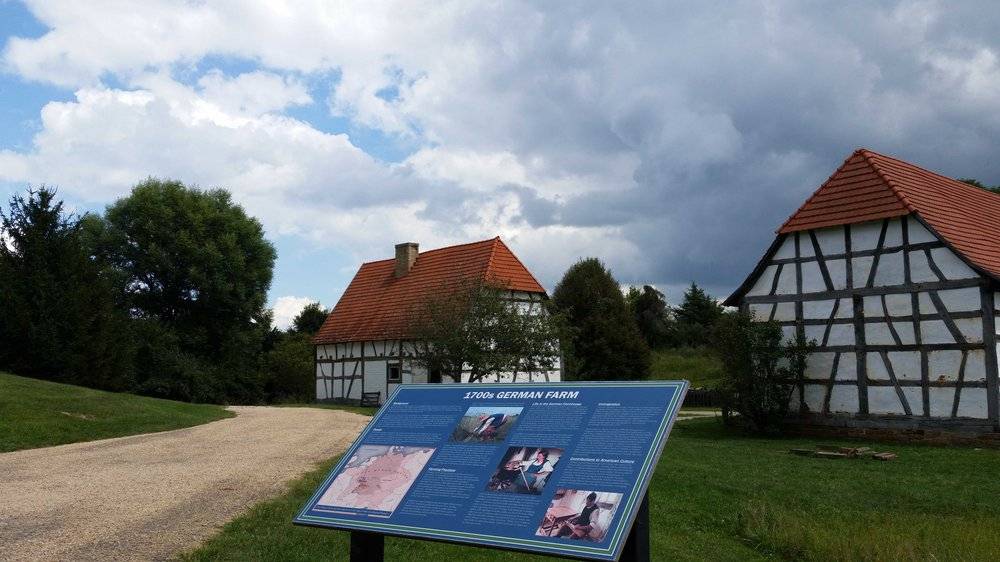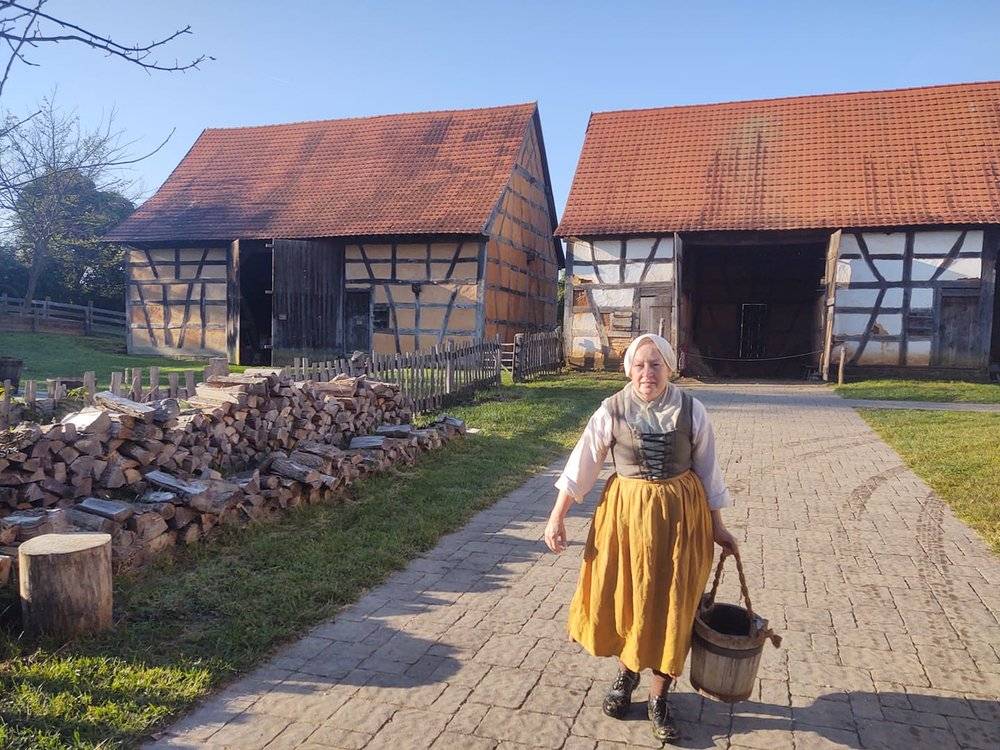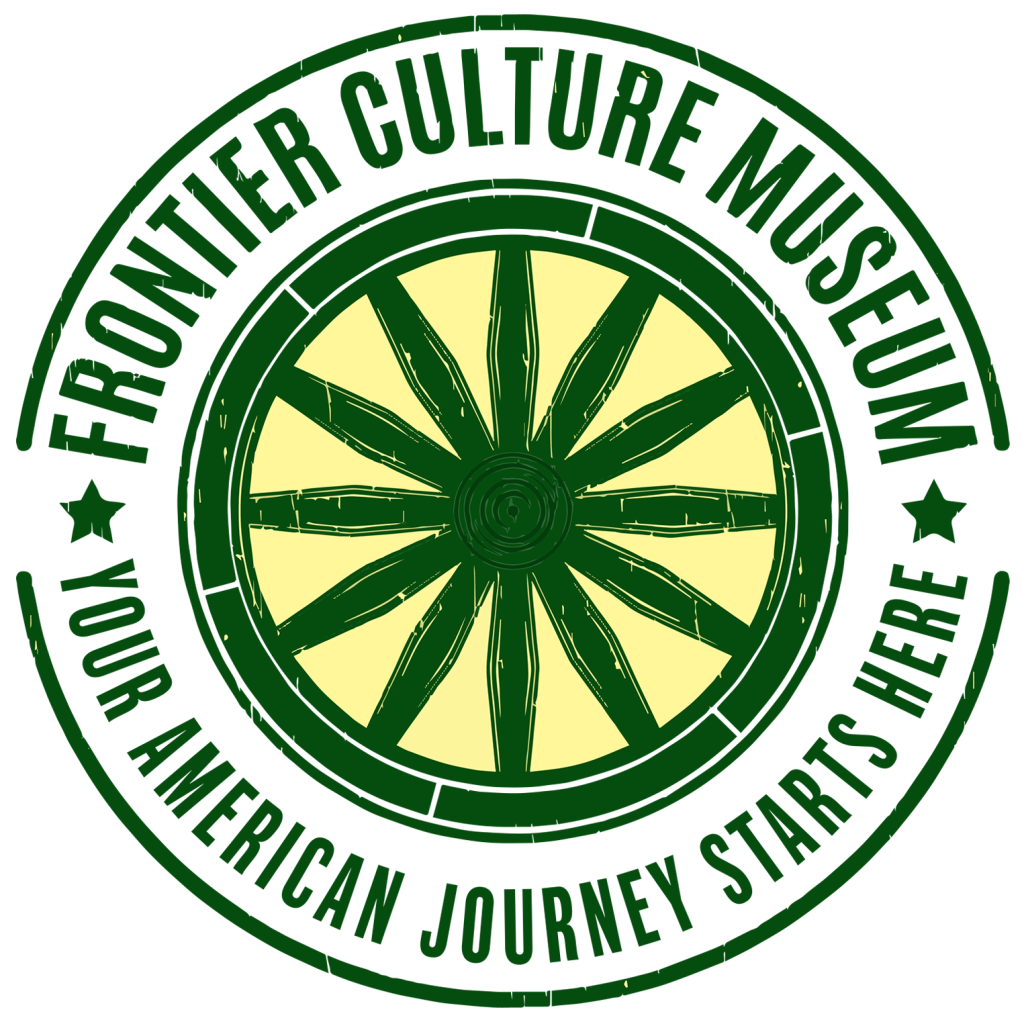Lecture Series
Germany, 1750s

The German Farm was originally located in the Rhineland Palatinate in modern-day Germany. The timber-framed style is typical for 18th-century farming villages in southwestern Germany.
Traditional peasant farming became increasingly difficult during the 1700s in this region. Population growth, and the practice of dividing farmland among all family heirs resulted in smaller farms and forced many families to practice a part-time craft to survive. Textile trade, blacksmithing, and woodworking were common crafts practiced in peasant households.
By 1775, roughly 100,000 German-speaking immigrants, mostly tenant farmers and rural artisans, had arrived in the colonies in the 18th century. Germans were the largest group of non-English speaking Europeans to settle in colonial America. Most came from the southwestern states of the Holy Roman Empire, particularly the Palatinate, Baden, and Württemberg on the middle and upper Rhine River.
German migration to colonial America was a small component of the great Auswanderung (Emigration), in which over a million Germans left their villages in the century after 1683 in search of a better life. Heavy taxation, overbearing rulers, frequent famines, and a shortage of farmland made life in the Empire’s southwestern territories difficult for the peasant population. Migration to less populous lands was an inviting prospect. Most migrated in family groups, though single male immigrants to America were increasingly common after 1760.
The journey to America was long, difficult, and expensive. Since peasants were legally bound to their territorial ruler, they had to get permission from the local authorities and pay a manumission fee in order to emigrate.
The first leg of their journey was the trip down the Rhine River to the port of Rotterdam, where they secured passage aboard a British immigrant ship bound for America. The transatlantic voyage to America was seven to fourteen weeks in crowded quarters. Many German emigrants traveled on credit, and upon arrival in the colonies were given a short period of time to find friends or family who would redeem (pay) the fee for their Atlantic crossing. These individuals were called “Redemptioners.” Those who did not find anyone to cover their fare became indentured servants.

The chief port of entry for German immigrants was Philadelphia, from where they spread into the countryside in search of land. Many of the early arrivals settled in southeastern Pennsylvania near Philadelphia. Others pressed further west to settle near the Susquehanna River or south to the colony of Maryland.
Over time, German-speaking colonists found their way into the Great Valley of the Appalachians and pushed into western Maryland and, by the 1730s, across the Potomac River into the northern Valley of Virginia. In the decades that followed German settlers and their American-born descendants continued moving south and west, leaving a distinctive mark on American culture wherever they settled.
Germans carried their language and culture with them to the colonial American backcountry. In many places, including the Valley of Virginia, traditional German culture persisted through the mid-1800s before many of its traces faded.
Pottery, painted furniture with lavish decoration, and long-rifle building were among the most significant German contributions. Germans also valued the freedom they found in America, though liberty was more personal than political for them, and they valued independence for their communities.
